History of Life – Background
Introduction
Our solar system, including the Earth, formed about 4.54 billion years ago. Since then, the Earth has undergone many dramatic changes. The chemical composition of the atmosphere, the arrangement of the continents, and the global climate have all changed, and continue to change, over time. These factors, and others, have determined the evolutionary history and diversity of life on Earth.
The immense length of Earth’s history is difficult for us to grasp. Thousands of years, let alone millions or billions, are simply outside the range of human experience. Geologic timescales in textbooks are useful reference points, but often compress deep time due to space limitations, which can give a misleading impression of Earth’s history.
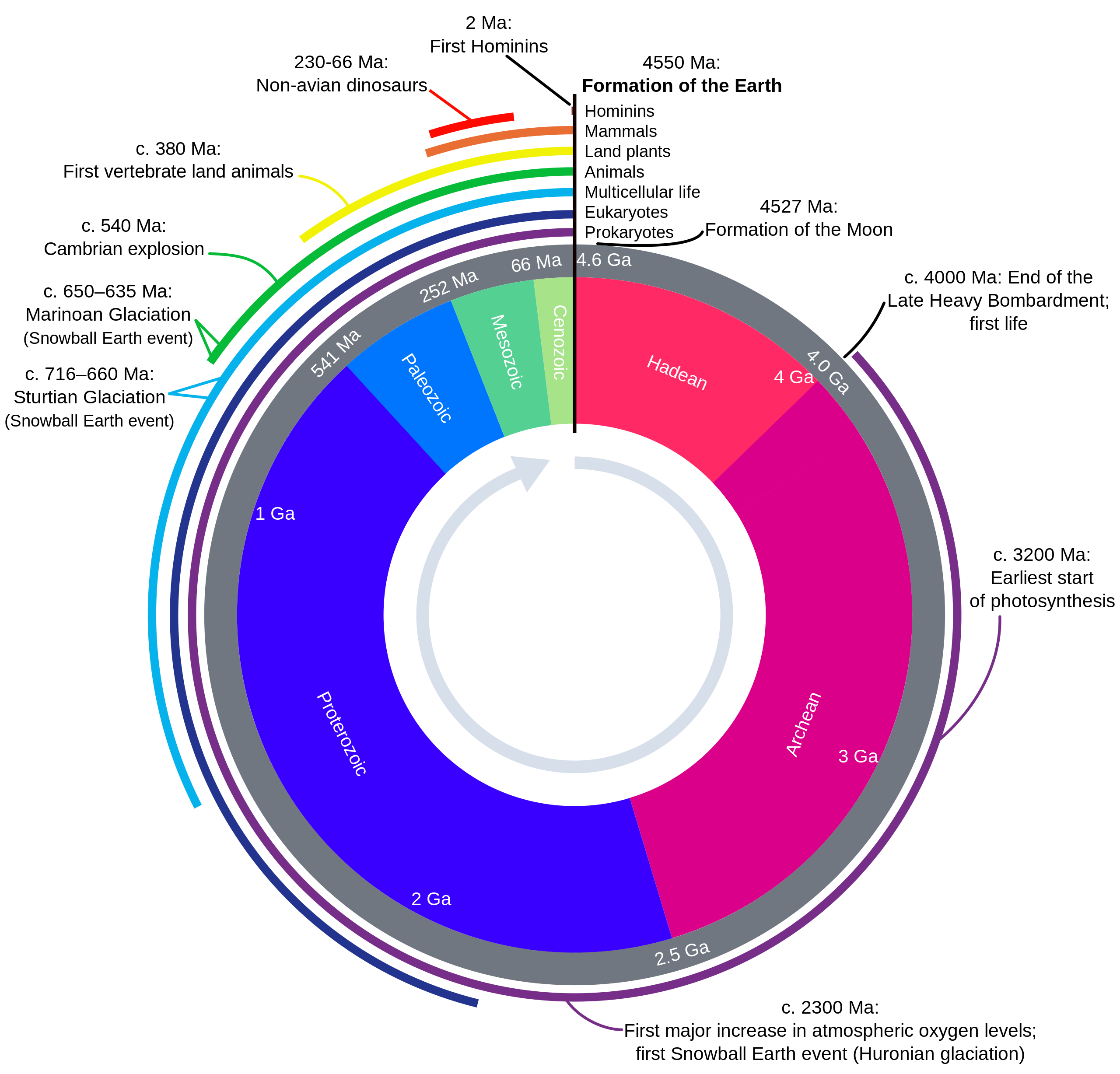
The Fossil Record
Fossils are evidence of ancient life. They exist in many forms and are extremely useful in helping understand the history of life.
Fossils are any evidence of past life preserved in rocks. They may be actual remains of body parts (rare), impressions of soft body parts, casts and molds of body parts (more common), body parts replaced by mineral (common) or evidence of animal behavior such as footprints and burrows. The body parts of living organisms range from the hard bones and shells of animals, soft cellulose of plants, soft bodies of jellyfish, down to single cells of bacteria and algae.

Which body parts can be preserved? The vast majority of life today consists soft-bodied and/or single celled organisms, and will not likely be preserved in the geologic record except under unusual conditions. The best environment for preservation is the ocean, yet marine processes can dissolve hard parts and scavenging can reduce or eliminate remains. Thus, even under ideal conditions in the ocean, the likelihood of preservation is quite limited. For terrestrial life, the possibility of remains being buried and preserved is even more limited. In other words, the fossil record is incomplete and records only a small percentage of life that existed. In addition, the fossil record is biased toward organisms with hard parts, organisms that lived more recently, and organisms that existed for a long geologic time. However, despite the limitations of the fossil record, we have an incredible number of fossils which illustrate a fascinating picture of evolution of life on Earth.
Types of Fossils
Remnants or impressions of hard parts, such as a marine clam shell or dinosaur bone, are the most common types of fossils. The original material has almost always been replaced with new minerals that preserve much of the shape of the original shell, bone, or cell. The common types of fossil preservation are actual preservation, permineralization, molds and casts, carbonization, and trace fossils.
Actual preservation is a rare form of fossilization where the original materials or hard parts of the organism are preserved. Preservation of soft-tissue is very rare since these organic materials easily disappear because of bacterial decay. Examples of actual preservation are unaltered biological materials like insects in amber or original minerals like mother-of-pearl on the interior of a shell. Another example is mammoth skin and hair preserved in post-glacial deposits in the Arctic regions. Rare mummification has left fragments of soft tissue, skin, and sometimes even blood vessels of dinosaurs, from which proteins have been isolated and evidence for DNA fragments have been discovered.
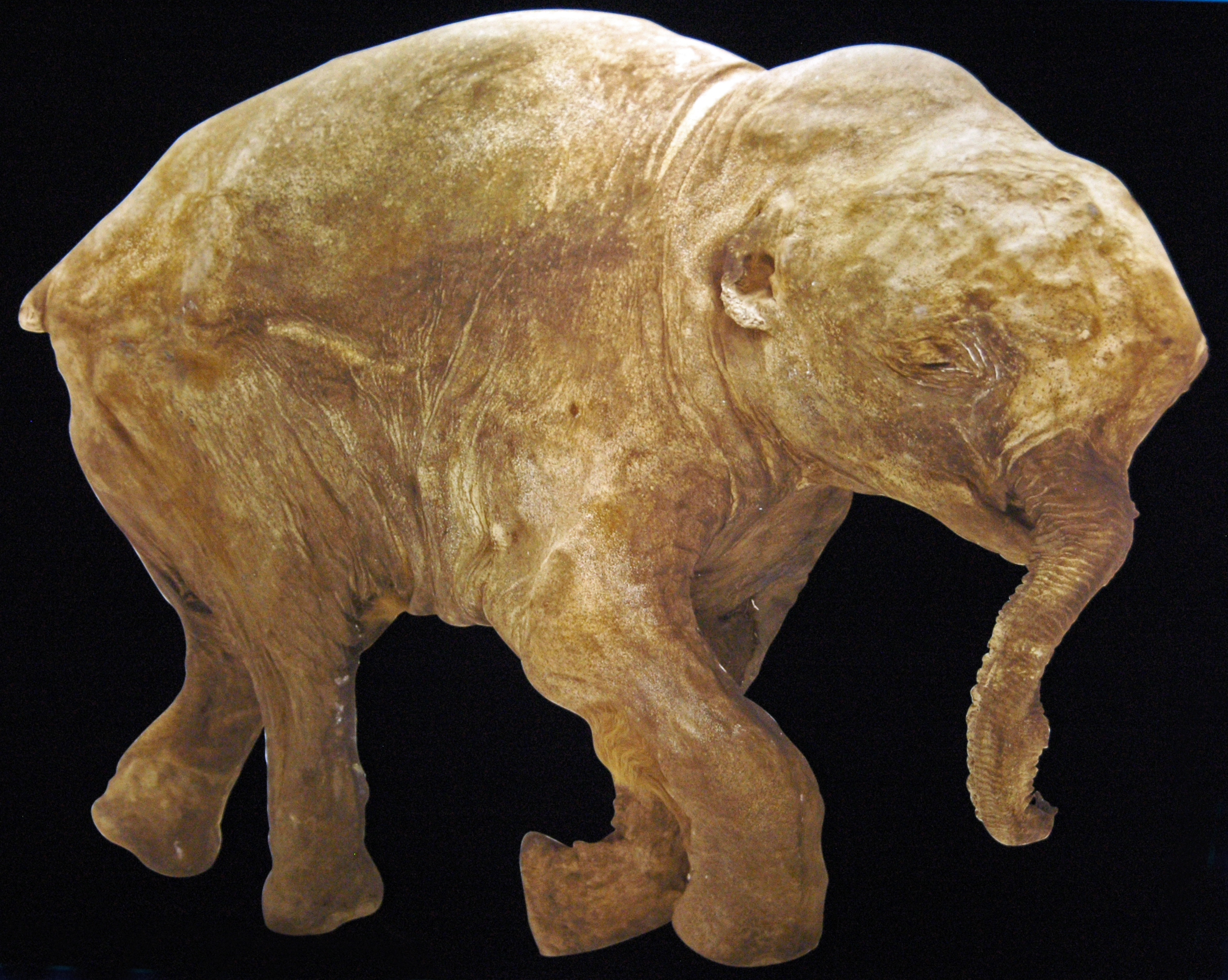
Permineralization occurs when an organism is buried, and then elements in groundwater completely impregnate all spaces within the body, even cells. The organic tissue is therefore replaced with minerals. Soft body structures can be preserved in great detail, but stronger materials like bone and teeth are the most likely to be preserved. Petrified wood is an example of detailed cellulose structures in the wood being preserved. Most dinosaur bones are also permineralized.
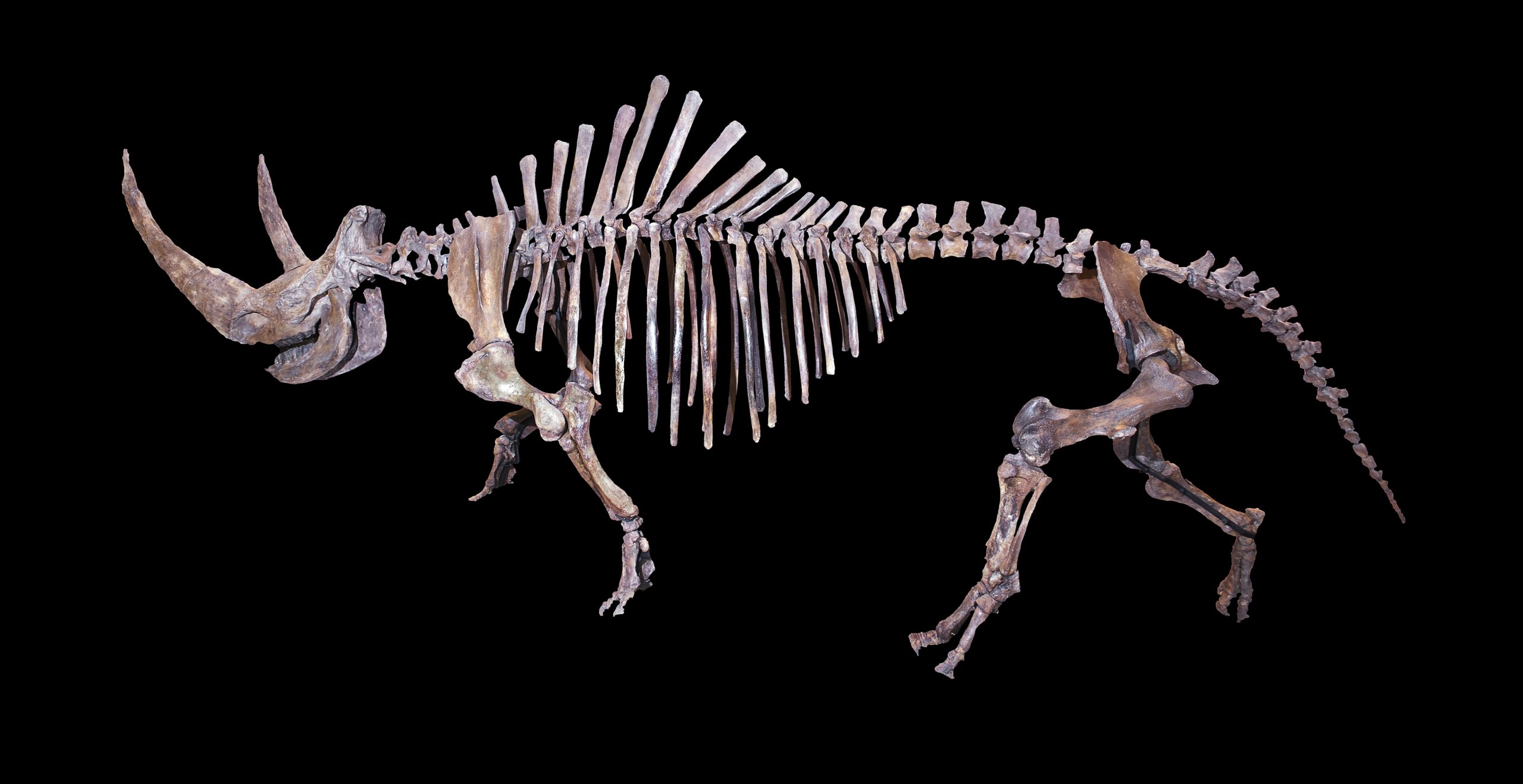
Coal balls are another interesting example. Coal balls are permineralized portions of coal-forming plant peats known from Upper Carboniferous (Pennsylvanian) coal seams in Europe and the Midwestern US. These coal seams are dated (for the most part) at between 300 and 320 million years old. Coal balls range in size from a few centimeters to over 2 meters in diameter and are variable in shape, but often rounded. They formed when peat in the “coal swamps” was infiltrated with calcium carbonate (calcite), magnesium carbonate, or less commonly iron sulfide (pyrite). Preservation within the coal balls is often exquisite, showing cellular structure (and sometimes subcellular structures such as nuclei) of stems, leaves, roots, and other plant structures. Study of the plant materials within coal balls has contributed greatly to understanding of plants during the Pennsylvanian period.
One of the most widespread techniques for studying coal balls is by making peels. Coal balls can be cut into slabs using lapidary saws (i.e. slab saws). Serial peels can be made from the cut surfaces. As many as 500 peels per inch may be made, providing a thorough understanding of the anatomy of these ancient plants.
Molds and casts form when the original material of the organism dissolves and leaves a cavity in the surrounding rock. The shape of this cavity is an external mold. If the mold is subsequently filled with sediments or a mineral precipitate, the organism’s external shape is preserved as a cast.
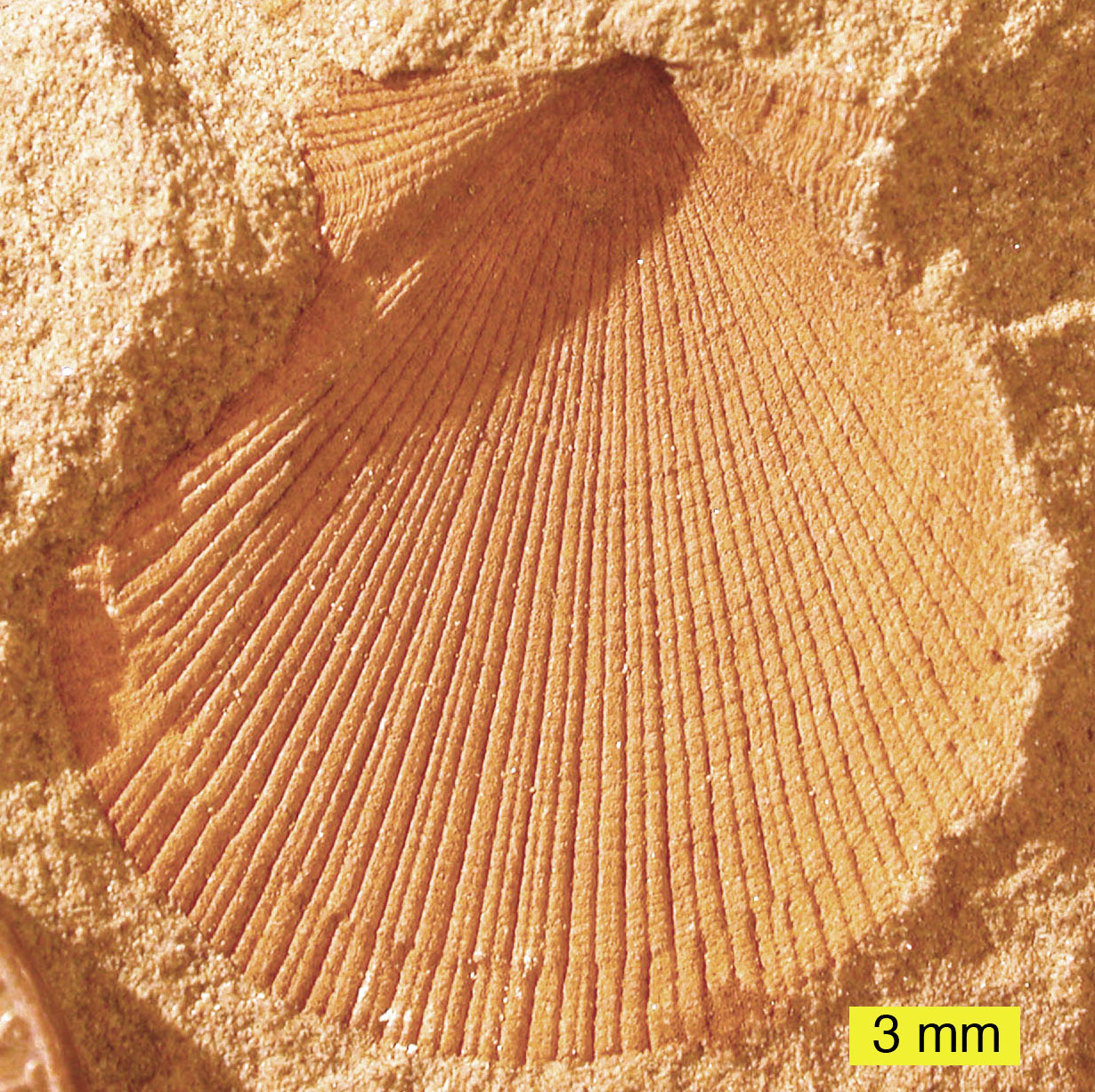
Sometimes internal cavities of organisms, such internal casts of clams, snails, and even skulls are preserved as internal casts showing details of soft structures. If the chemistry is right, and burial is rapid, mineral nodules form around soft structures preserving the three-dimensional detail.
Carbonization occurs when the organic tissues of an organism are compressed, the volatiles are driven out, and everything but the carbon disappears leaving a carbon silhouette of the original organism. Leaf and fern fossils are examples of carbonization.
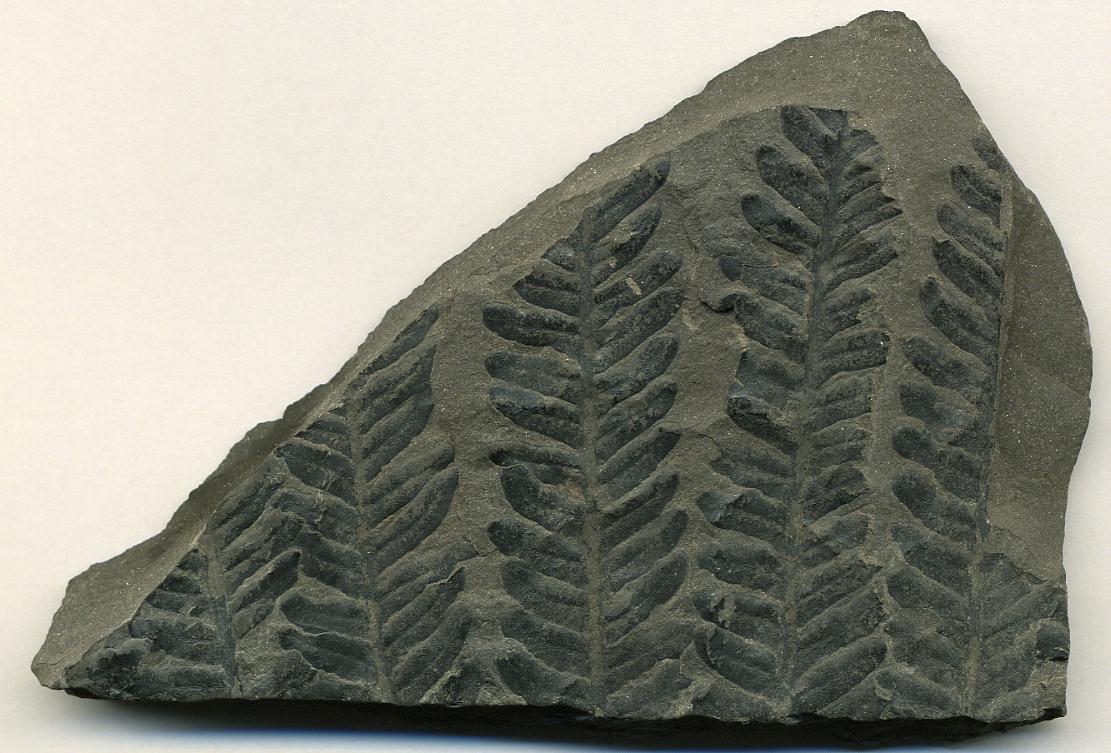
Trace fossils are indirect evidence left behind by an organism, such as burrows and footprints, as it lived its life. Ichnology is specifically the study of prehistoric animal tracks. Dinosaur tracks testify to their presence and movement over an area, and even provide information about their size, gait, speed, and behavior. Burrows dug by tunneling organisms tell of their presence and mode of life.
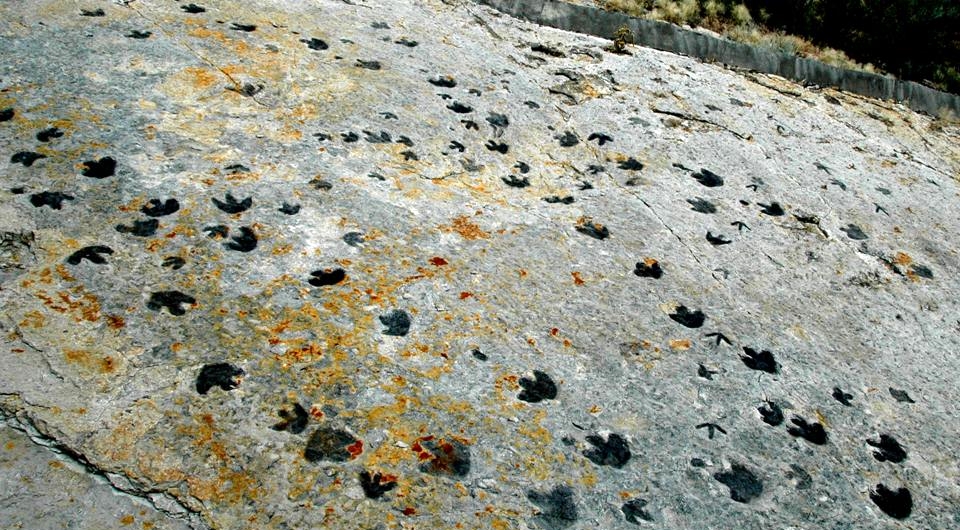
Other trace fossils include fossilized feces called coprolites and stomach stones called gastroliths that provide information about diet and habitat.
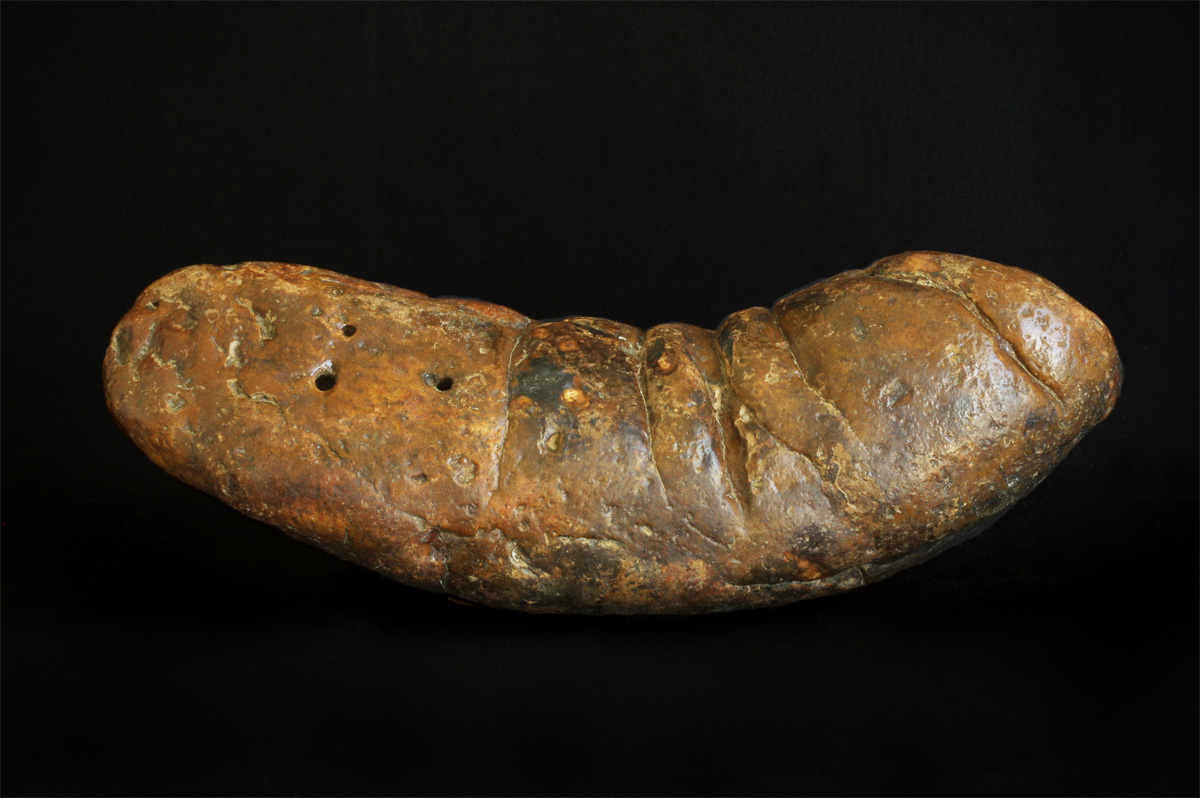
Like extant organisms, fossils are named and classified using the binomial system and the taxonomical hierarchy. Because of the fragmented nature of many fossil specimens classification can be problematic. Large organisms are rarely found intact, so specimens of different parts of the organism are often placed in provisional “form” or “organ” genera until they can be shown to be connected (for example, some fossil plants, such as those found within the coal balls, were first described with separate names for roots, stems, leaves, and reproductive structures).
Some text adapted from Open Geology by Chris Johnson, Matthew D. Affolter, Paul Inkenbrandt, Cam Mosher (2017) and used under a Creative Commons Attribution-NonCommercial-ShareAlike License 4.0.
Any evidence of ancient life.
Material filling in a cavity left by a organism that has dissolved away.
Depositional environments that are on land.
A natural substance that is typically solid, has a crystalline structure, and is typically formed by inorganic processes. Minerals are the building blocks of most rocks.
Organic material making a preserved impression in a rock.
Unchanged materials preserved found in the fossil record. This is rare, and is exceeding less likely with soft materials and older materials.
Style of fossilization where materials are replaced by minerals in groundwater fluids.
A type of fossilization where only a carbon-rich film is preserved, common in plants.
vidence of biologic activity that is preserved in the fossil record, but it not the organism itself. Examples include footprints and burrows. Ichnology is the study of trace fossils.

